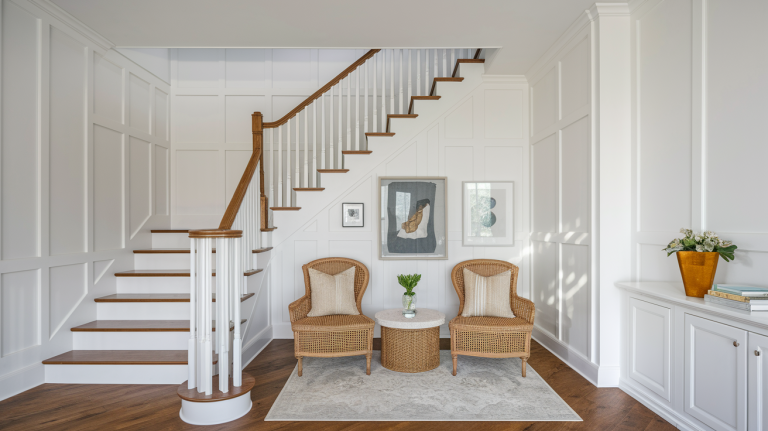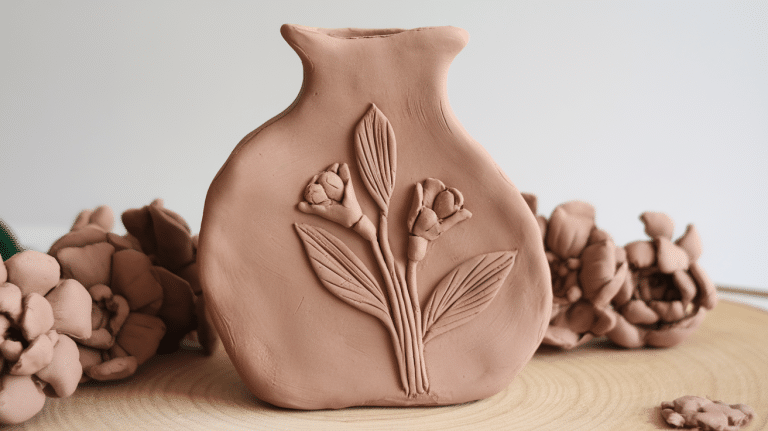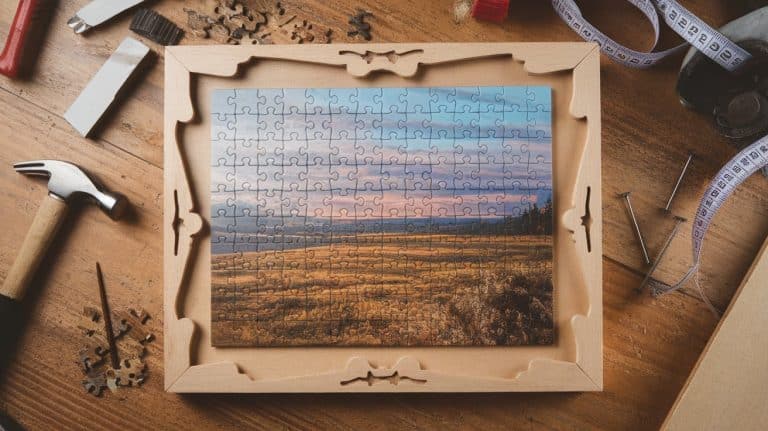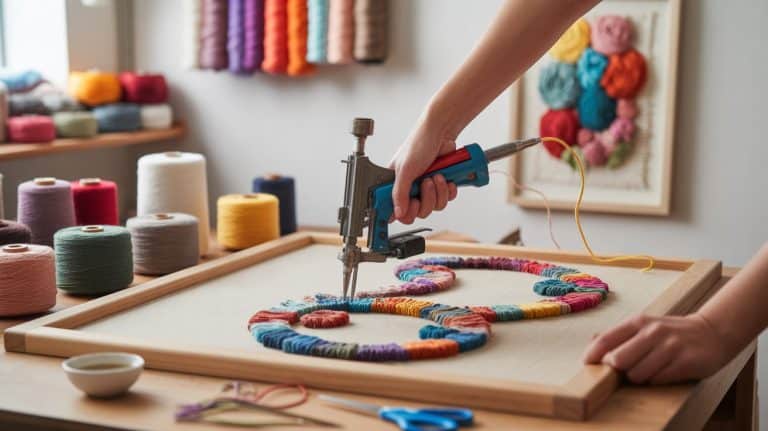How to Make a Wood Mirror Frame: A Complete DIY Guide
Are you looking to add a special touch to your home? A handmade wood mirror frame might be your next perfect project. This guide shows you how to turn basic wood into beautiful mirror frames that match your style.
Making your frame costs less than buying one from stores. You control every detail – from wood choice to final finish. Plus, the pride of pointing to a mirror and saying, “I made that,” feels wonderful.
Whether you’re new to DIY or have worked with wood before, this guide has something for you. We’ll review styles, tools, techniques, and tips to help you succeed.
From simple designs to detailed creations, you’ll find all the steps to craft your ideal mirror frame.
Why DIY Your Wood Mirror Frame?
Advantages over store-bought frames
Making your wood mirror frame saves money while adding personal style to your home. Store-bought frames often cost three to four times more than creating one yourself.
Depending on the wood you use, the materials for a basic wood frame project typically cost between $50 and $100.
This investment gives you control over quality and design, unlike mass-produced options that might not fit your needs.
Personalization and originality
A handmade wood frame perfectly matches your existing furniture and decor. Select wood types, finishes, and sizes that suit your space.
Your mirror frame becomes a unique piece that tells a story. When you craft the frame yourself, the width, style, and color options are limitless, unlike standard store options, which offer limited choices.
Enhancing home aesthetics
Wood frames bring warmth and character to any room in your house. They can turn a basic bathroom mirror into a striking focal point or make a bedroom mirror feel more luxurious.
The natural grain patterns in wood create a visual interest that plain metal or plastic frames can’t match. Simple updates like adding a wood frame to an existing mirror can refresh your space without major renovations.
A well-crafted wood frame adds depth and texture to your walls. This simple addition can make rooms feel more finished and put-together, improving the overall look of your living space.
Understanding Different Styles and Designs
Rustic and Farmhouse
Raw wood textures and simple designs define this popular style. Pine boards and fence pickets make perfect materials for farmhouse frames. The wood can be distressed with hammers and nails to create an aged look.
Modern and Minimalist
Clean lines and smooth finishes mark this style. For a sleek appearance, select straight-cut lumber with minimal knots. Light woods like maple or birch work well with modern decor.
Industrial Chic
Metal accents meet wood in this style combination. For an industrial touch, add L-brackets or metal corners to wood frames. Dark stains paired with black metal create a strong visual impact.
Coastal and Driftwood
Light, weathered woods capture this beach-inspired look. White-washed finishes on pine or cedar reflect coastal charm. Simple construction with slightly rough edges suits this casual style.
Vintage and Antique
Rich wood tones and ornate details define vintage frames. Oak or cherry woods offer traditional appeal. Light distressing and dark stains create an aged finish.
Materials and Tools You’ll Need
1. Wood Options
Pine offers an affordable, easy-to-work-with choice for beginners. Oak provides durability and clear grain patterns but costs more. Reclaimed wood brings unique character and saves money while helping the environment.
2. Tools
Basic needs include a saw, drill, measuring tape, and sander. Safety gear covers goggles, work gloves, and dust masks. A miter saw helps with precise cuts, but a hand saw works for simple projects.
3. Hardware
Mirror clips secure glass safely to the frame. Wood screws and brad nails hold frame pieces together. L-brackets add stability to larger frames.
4. Finishing Supplies
Wood stains come in various shades to match your decor. Clear sealants protect the wood and finish. Sandpaper in different grits creates smooth surfaces.
DIY Step-By-Step Guide for Building Wooden Mirror Frame
STEP 1: Gather Materials and Tools
- Materials: Two 1×4 boards (8 feet long), a mirror, wood glue, nails, and white paint (optional for finishing).
- Tools: Table saw, miter saw, brad nailer, sander, measuring tape, and clamps.
STEP 2: Cut and Measure the Boards
- Cut the boards to create four frame pieces: two top and bottom pieces (36 inches each) and two side pieces (28 inches each).
- Use a miter saw to cut 45-degree angles on the ends of each piece to ensure snug corners.
STEP 3: Create a Groove for the mirror
- Adjust the table saw blade to 1 inch high and the guide bar to ⅛ inch from the edge.
- Cut a groove along the back of each board where the mirror will rest.
STEP 4: Assemble the Frame
- Sand all pieces for smoothness.
- Align the grooves and corners, applying wood glue at the joints.
- Use a brad nailer with 1¼-inch nails to secure the corners.
STEP 5: Finish and Secure the Mirror
- Apply a thin white paint or stain for a rustic, washed look before final assembly.
- Insert the mirror into the grooves and secure it with wood pieces cut to fit the frame’s back.
Video Tutorial
For more details, check out this video tutorial by Christy Cain – Appalachian Home Co.
Customization and Personalization Techniques
Carving and Engraving Wood
Simple hand tools create basic patterns in softwood. A rotary tool makes detailed designs possible. Keep patterns small and test them on scrap wood first.
Adding Decorative Elements
Small metal corners add visual appeal to plain frames. Decorative tiles fit well in wider frame borders. Rope or twine wrapping suits coastal-style frames.
Combining Different Materials
Wood pairs naturally with metal for modern looks. Glass tiles sparkle in bathroom frames. Natural elements like seashells suit beach-themed designs.
Stenciling and Artistic Painting
Basic paint patterns work well on light-colored woods. Stencils help create repeating designs easily. Keep painted elements simple to let the wood grain show through.
Finishing Your Frame
1. Sanding Techniques
Start with rough-grit paper and move to finer grits. For the best results, sand in the direction of the wood grain. A smooth finish requires at least three sanding stages.
2. Stain vs. Paint Choices
Stains highlight natural wood patterns and grain, while paint offers full coverage and color control. Both options require proper wood preparation for good results.
3. Applying Sealants
Apply thin, even coats of sealant with a quality brush. Let each coat dry fully between applications. Two or three coats provide good protection.
4. Distressing Methods
Light sanding on edges creates natural wear patterns. Small dents from chain links add aged character. Sand through paint layers for a time-worn look.
Attaching the Frame to the Mirror
Methods for Different Mirror Types
Frameless mirrors need secure mounting with mirror clips. Beveled mirrors require spacing for proper edge clearance. Choose adhesive based on mirror backing type.
Using Mirror Adhesive vs. Clips
Silicone adhesive creates permanent bonds with mirrors, while mirror clips offer adjustable, removable mounting. For large mirrors, combine both methods.
Ensuring Secure Attachment
Test frame fit before adding any adhesive. Apply even pressure when mounting the mirror to the frame. Wait 24 hours for the adhesive to cure completely.
Mounting Hardware
Heavy-duty D-rings support substantial mirror weight, and wall anchors provide extra mounting stability. Level mirrors carefully before final installation.
Mounting and Displaying Your Mirror
1. Wall Mounting Hardware Options
When properly installed, D-rings support up to 50 pounds. French cleats distribute weight evenly across the frame. Wire hanging systems work well for lighter mirrors.
2. Positioning Tips
Place mirrors at eye level in most rooms. Check for wall studs before selecting mounting spots. Allow space around mirrors for proper visual balance.
3. Different Wall Materials
Masonry walls need special anchors for security. The drywall requires stud mounting or toggle bolts. Wood walls accept direct screw mounting easily.
4. Weight Considerations
Large mirrors need multiple mounting points. Check wall strength before hanging heavy items. Use helper support during the installation process.
Safety Guidelines and Best Practices
Proper Tool Usage
Keep tools clean and well-maintained for safe operation. Make all cuts away from your body. Store sharp tools safely when not in use.
Handling Glass and Mirrors
Wear thick gloves when handling mirror edges. Work on a flat, stable surface. Keep mirrors vertical during transport to prevent flexing.
Personal Protective Equipment
Safety glasses protect eyes from wood dust and splinters. Work gloves prevent cuts and scratches. Dust masks filter fine particles during sanding.
Safe Waste Disposal
Wrap broken glass pieces in thick paper before disposal. Recycle wood scraps when possible. Clean up the workspace after the project is completed.
Budgeting and Resource Management
1. Cost Estimation
Basic frames cost between $30 and $50 for materials. Tool investments range from $50 to $200 for essentials. Professional frames often cost $200 to $500 more.
2. Money-Saving Tips
Buy wood during store sales periods. Share tools with other DIY enthusiasts. Check local stores for discounted materials.
3. Time Management
Set aside 4-6 hours for basic frame projects. Allow extra time for complex designs. Plan for overnight drying between coats.
4. Resource Planning
Purchase extra materials for practice cuts. Store leftover supplies for future projects. Keep basic tools handy for quick repairs.
Eco-Friendly and Sustainable Practices
Sustainable Wood Sources
Local lumber yards often stock responsibly harvested wood. Salvaged wood from old furniture makes great frame material, and small wood shops sell offcuts at lower prices.
Non-Toxic Finishes
Water-based stains reduce harmful fumes. Natural oils provide safe wood protection. Low-VOC sealants keep indoor air clean.
Material Recycling
Old mirrors work well with new frames. Leftover wood serves many other projects, and metal hardware stays useful for years.
Environmental Impact
Local wood reduces transport pollution. Natural finishes help protect air quality. Proper disposal prevents environmental harm.
Troubleshooting Common Issues
1. Fixing Misaligned Frames
Check corners with a square tool before final assembly. Small gaps fill well with wood putty. Clamps help hold pieces while the glue dries.
2. Wood Imperfections
Wood filler patches, small knot holes, and extra sanding smooth rough grain patterns. Pre-stain wood conditioner helps even out imperfections.
3. Common Repairs
Loose joints tighten with fresh glue application. Scratches blend in with matching markers. Corner splits mend with wood glue and clamps.
4. Prevention Tips
Quality materials reduce future problems. Good preparation prevents most issues. Regular maintenance keeps frames looking fresh.
Conclusion
Creating your wood mirror frame brings satisfaction beyond the finished piece. The skills you learn stay with you for future projects, and your home gains a personal touch that store-bought items can’t match.
Remember to start with simpler designs as you build confidence. Keep safety in mind, gather your materials before starting, and take time to plan your project well. The beauty of DIY lies in making each piece truly yours.
We’d love to see your wood frame creations. Share your experience with fellow crafters, and ask questions if you need help. Your project might inspire others to try their hand at frame-making.
Ready to start? Pick your style, gather your tools, and create something special for your home.
Frequently Asked Questions (FAQs)
What Kind Of Wood Do I Use To Frame A Mirror?
Pine, poplar, oak, or cedar are great options. Choose based on budget, style, and desired durability. Softer woods are more affordable and easier to work with.
Can I Frame A Frameless Mirror?
Yes, a frameless mirror can be framed by creating a wooden frame with grooves or backing boards to hold it securely in place without damaging the adhesive.
What Tools Are Essential For A DIY Mirror Frame Project?
Essential tools include a miter saw, table saw, sander, brad nailer, measuring tape, wood glue, clamps, and optional tools like a drill for added reinforcement.
















